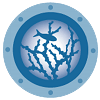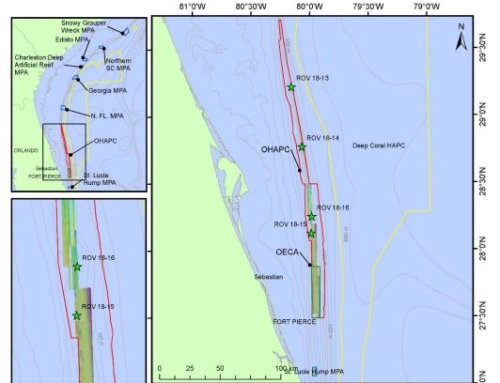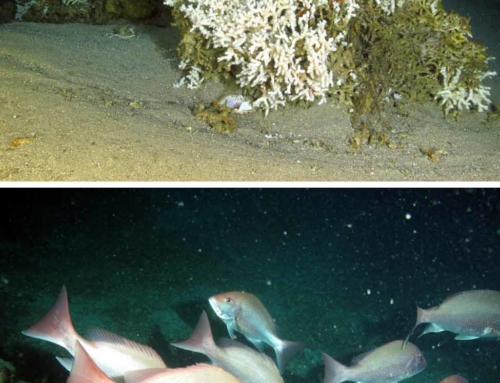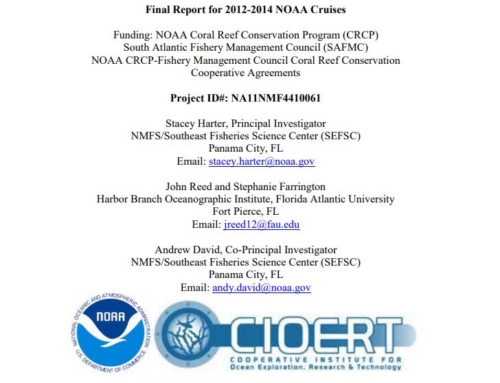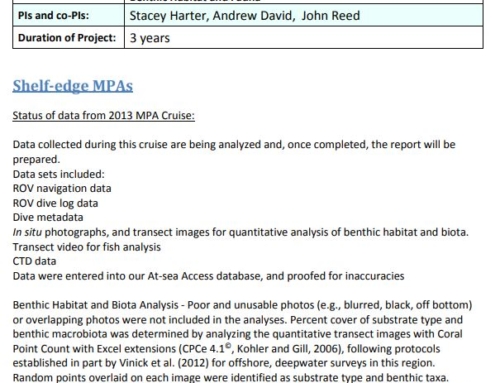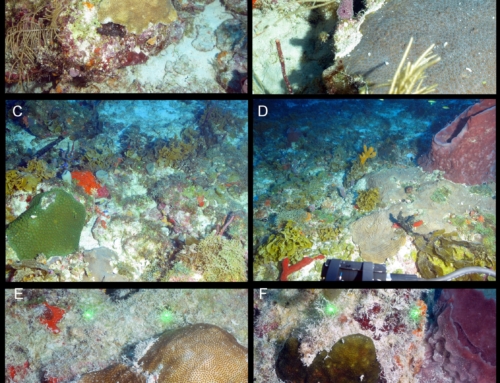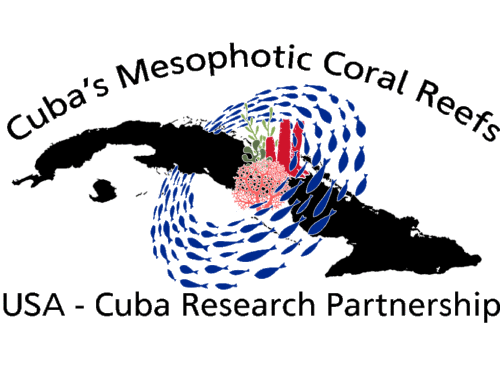Project Description
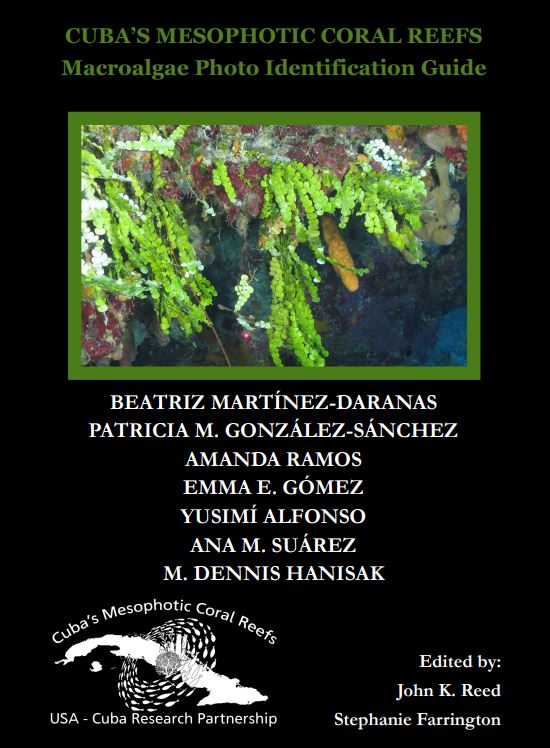
Cuba’s Mesophotic Coral Reefs- Macro Algae Photo Identification Guide
Beatriz Martínez-Daranas, Patricia M. González-Sánchez, Amanda Ramos, Emma E. Gómez, Yusimí Alfonso, Ana M. Suárez, M. Dennis Hanisak
Introduction
Mesophotic coral reef ecosystems (MCEs) are light-dependent benthic communities that occur deeper than shallow reefs and typically range from depths of 30 m to the bottom of the photic zone, which may extend to >150 m in some regions. MCEs represent in part an extension of shallow-water coral reef 3 ecosystems and support a diverse assemblages of habitat-building taxa, including corals, sponges and algae, and associated fish (Reed et al., 2018).
Many MCEs worldwide appear to be thriving compared to shallow reefs. The deep reef refugia hypothesis suggests that MCEs may be less impacted from natural and anthropogenic impacts than shallow coral reefs and may be more stable and resilient than shallow reefs. MCEs may also act as refugia for shallow reef species through the export of fish and coral larvae. However, it is now apparent that MCEs are also vulnerable to disturbances from all facets of perturbations including climate change, bottom trawling, invasive species, and pollution. Whereas considerable data have been reported regarding the distribution, ecology, and health of Cuba’s shallow reefs, relatively little is known about the distribution, community structure and health of Cuba’s deep mesophotic reefs. Cuba’s strong marine policies and legislation has already resulted in 105 MPAs, covering nearly 25% of its insular shelf, yet overfishing, poaching, pollution and global warming are threats to these vulnerable ecosystems, as reefs worldwide are threatened. This photo album of selected macroalgae associated with Cuba’s mesophotic reefs resulted from a recent joint Cuba-U.S. expedition that was conducted from May 14 to June 13, 2017 to map and document the extent and health of MCEs along the entire coastline of Cuba. Total ship transit around the island covered ~2,778 km (~1,500 nmi). Forty-three Remotely Operated Vehicle (ROV) dives at 36 stations confirmed the presence of MCEs habitat on all coasts of Cuba (Reed et al. 2018; Figure 1, Table 1).
ROV dives surveyed reefs from depths of 188 m to 18 m, covered 27 km, totaled 99 hours of bottom time, and resulted in 110 hours of high-definition video. A total of 21,146 digital still images 4 documented habitat and species. The primary geomorphological features were the Deep Island Slope (125- >150 m), Deep Fore[1]Reef Escarpment (the ‘Wall’, 50-125 m), and Deep Fore-Reef Slope (30-50 m). Most vertical surfaces of the Wall were covered with dense sponges, algae, octocorals, and black corals. Agaricia was the most abundant scleractinian genus on the Wall at depths of 50-75 m, and was observed to 122 m. A total of 63 taxa of macroalgae (29 Chlorophyta, 25 Rhodophyta, 9 Ochrophyta) and 1 Cyanobacteria (syn., Cyanophyta) have been identified to date (Reed et al., 2018). The most frequent taxa were crustose coralline algae (CCA), Halimeda copiosa, Lobophora spp., and Dictyota spp. In general, the diversity and coverage of algae were very low on the deep island slope where only CCA and thin encrusting green algae occurred. Between 50 and 100 m, the algal diversity and cover increased, with H. copiosa and CCA dominating. In the upper mesophotic zone (30-50 m), the species richness and cover increased even more, with Lobophora spp. and other Dictyotales dominating. Although many papers have reported the species Lobophora variegata in Caribbean coral reefs, recent taxonomy papers have confirmed, using molecular tools, that this genus includes, at least, five cryptic species in the Western Tropical and Subtropical Atlantic (Schultz et al., 2015; Wynne, 2017).
Some interesting records of maximum depth of algal occurrence include an unidentified green crust (169 m), CCA (169 m), Peyssonneliaceae (139 m), Lobophora spp. (139 m), and Halimeda spp. (127 m). Cyanobacteria were observed at eight sites. Detrital leaves of the marine angiosperm Thalassia testudinum were also observed on the deep island slope at some sites showing the vertical connectivity between coastal-marine ecosystems.
Macroalgal taxa that were common to all regions of the Cuban mesophotic coral reefs included the coralline red algae (Subclass 5 Corallinophycidae) and the family Peyssonneliaceae in the Rhodophyta; some green unidentified crustose forms, the genera Halimeda (particularly H. copiosa, H. goreaui, H. tuna), Avrainvillea, Penicillus, Udotea (particularly U. cyathiformis) in the Chlorophyta; and the genera Dictyota and Lobophora in the Ochrophyta (Reed et al., 2018). Site C-10 (Banco San Antonio, west coast) had the greatest number of taxa (24), whereas C-52 (southeast coast) which lacked the typical vertical wall had the least (4 taxa). The northeastern region had the highest number of macroalgal taxa identified so far (38 taxa), whereas the western regions had the least (24 taxa in the northwest region, and 25 in the southwest). These results could indicate better conditions for the development of macroalgae in the northeastern region of Cuba, and/or lower herbivory levels, but further work is still needed.
It is important to note that the macroalgal species included in this guide represent a subset of the 63 species documented to date on Cuba’s mesophotic reefs during this expedition (Reed et al., 2018). Many of the identified species are epiphytic, so they are not observed in pictures taken in the field.
Although Cyanobacteria are not macroalgae, those are photosynthetic organisms that could indicate stress on marine ecosystems. They were abundant only at Cayo Largo del Sur MPA (Station 29) showing evidence of nutrient pollution (Reed et al., 2018).
Macroalgae taxa were identified using the scientific literature (mainly Littler and Littler, 2000; Littler et al. 2008) and taxonomy was updated using WoRMS and Wynne (2017).
Martínez-Daranas, Beatriz, Patricia M. González-Sánchez, Amanda Ramos, Emma E. Gómez, Yusimí Alfonso, Ana M. Suárez, M. Dennis Hanisak. 2018. Cuba’s Mesopho-tic Coral Reefs- Macro Algae Photo Identification Guide: Editors- John K. Reed, Stephanie Farrington. Cooperative Institute for Ocean Exploration, Research, and Technology (CIOERT) at Harbor Branch Oceanographic Institute- Florida Atlantic University (HBOI-FAU). First Edition: November 2018. Ironside Press, Vero Beach, Florida. HBOI Contribution Number 2192.

